Dragon Fruit Farming With Method, Process And Health Benefits
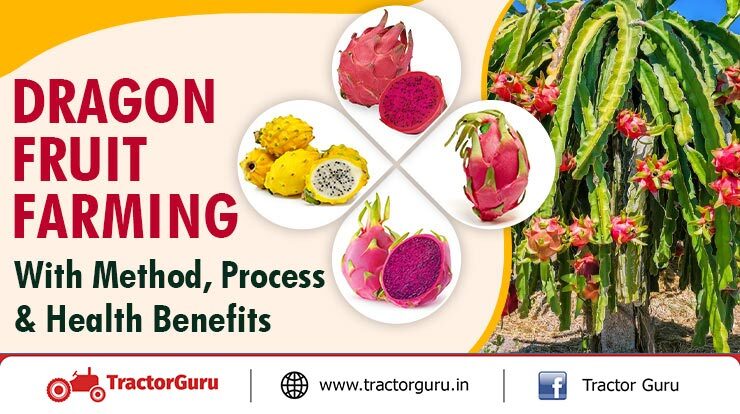
Dragon fruit is a tropical fruit that has become very popular in recent years. Many farmers cultivate dragon fruit in a big way because of dragon fruit taste, medicinal value and demand in the fruit market. Those in urban localities, who lack sufficient space, can take up cultivation on the roof. For example, a house built in 30×40 square feet can grow 30 plants on the terrace. Within two years, a person can produce and earn up to Rs 30,000 a year from dragon fruit farming, depending on the price in the market.
For the dragon fruit farming process, farmers must know all the procedures related to dragon fruit agriculture which is honestly reliable for those who want to earn money from Indian dragon fruit. Such Dragon fruit plant for sale are available in the Indian market.
Method & Procedure for Dragon Fruit Growing Condition
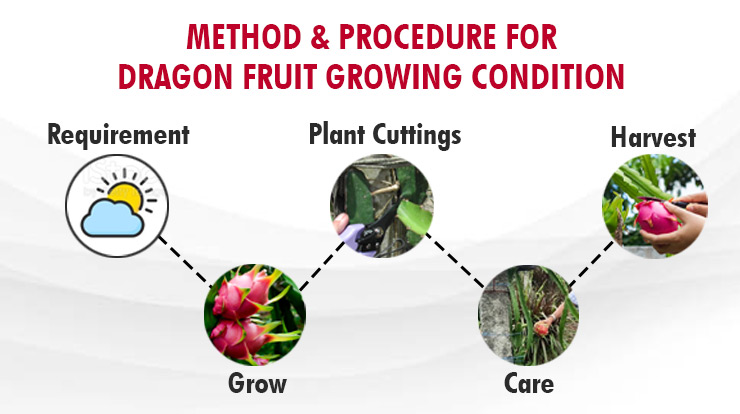
The dragon fruit plant is a climbing, large cactus dragon fruit plant that grows tall, succulent-like branches, thickens and also produces bright red or yellow fruit. The fruit of the dragon fruit plant (called dragon fruit, papaya, strawberry pear pitahaya or cactus fruit) is dense, juicy, and sweet—noble.
Dragon fruit flower also produces some of the largest flowers in the world, often referred to as “night-blooming cereus,” which bloom as gorgeous white flowers for only one night. And fill the air with a unique tropical.
Dragon Fruit Farming Techniques And Process
1. Climate Requirement for Dragon Fruit in India
A key feature of these crops is that they can grow in extremes of temperature. Dragons grow well in poor soils but are best suited to tropical climates with 40–60 cm rainfall for growth. The temperature between 20°C to 30°C is considered best for growing dragon fruit crops. If your climate outside is too cold or too hot for dragon fruit, you can also successfully grow a potted dragon fruit plant.
Although dragon fruit is in the cactus family, it is not like the cacti you typically see in the desert. Dragon fruit is a subtropical cactus native to Central America and South America, which means it thrives in mild, humid environments.
2. How to Grow Dragon Fruit Plant From Seeds?
Dragon Fruit Farming is an easy way to grow your dragon fruit cactus. Be aware, however, that if you grow a dragon fruit plant from seed, it can take several years (sometimes up to five) to bear fruit.
Prepare the Soil Bed:- Dragon fruit tree requires full sun. So that plant chooses a sunny area in your garden or a sunny window that gets at least six hours of sunlight a day. For soil, choose well-draining soil. Dragon fruit is sensitive to “wet feet” or constantly wet roots and is rich in organic matter. Don’t use cactus soil – As tropical plants, dragon fruit prefers more water than other cactus and wants something that will retain moisture a bit better.
Prepare the Seeds:- Cut a ripe dragon fruit in half and remove the black seeds. Wash the fruit pulp and pulp from the seeds and place the seeds on a damp paper towel for at least twelve hours.
Plant the seeds:- Sprinkle dragon fruit seeds over the soil’s surface and cover them with a thin layer of soil. It’s okay if it barely covers the seeds—they don’t need to be planted deeply.
Water:- Most the soil bed consistently, keeping it evenly moist. Cover the soil bed with plastic wrap to hold moisture in until the seeds germinate if your soil dries out.
Thin and transplant:- As your dragon fruit shoots continue to grow, thin them to give each new plant room. If you are growing them indoors, transplant them into larger pots. Mature dragon fruit will eventually need a twenty-gallon pot (at least twenty inches wide) for optimum health.
3. How to Plant Cuttings for Dragon Fruit Cultivation in India?
Cut up the cutting:- Cut the dragon fruit cuttings into three to five pieces. Each of these pieces can propagate to a new dragon fruit plant. Make sure you keep track of the “up” direction for each cutting – when you plant them, you’ll need to plant them upright to allow them to develop properly.
Plant the cuttings:- Plant each cutting by placing the base an inch or two below the soil and pressing down on the soil around it to keep it secure and upright. Make sure you plant the cuttings in the same direction as the original branch was growing – the end closest to the base of the original dragon fruit plant should be the end planted in the soil, and the end closer to the tip of the original branch.
4. How to Care for a Dragon Fruit Plant ?
Prune:- To keep your plant disease-free and growing properly on its support system, prune back any dead, dying, diseased, or overcrowded branches.
Fertilize:- During the dragon fruit season, fertilize your dragon fruit plant once a month to give it the nutrients it needs.
Pollinate:- Dragon plants rely on nocturnal pollinators such as moths and bats to help them produce fruit. If you’re growing yours as a houseplant indoors, you’ll need to turn to hand-pollination on the blooms: Run a clean cotton swab or paintbrush in the middle of the flower to collect the pollen, then blow the pollen off the flower. Some varieties of dragon fruit self-pollinate while others require another plant to cross-pollinate – see which variety you have and if you need more than one plant to produce fruit.
Keep at temperature:- Dragon fruit plants don’t get hardy in cold or hot climates, so make sure you keep your plant between 32 and 90 degrees Fahrenheit — about 70 degrees is about right. If your area is hot in the summer months but very cold during the winter months, bring your plant indoors to keep it warm when the weather turns cold.
5. How to Harvest Dragon Fruit?
After the complete process of cultivation, now is the time to harvest dragon fruit. So, here be with us and get the full dragon fruit farming information regarding harvesting.
Once your dragon fruit tree begins to bear fruit, harvesting is easy. Look for brightly coloured fruits whose “wings” (the flaps of the skin on the outside of the fruit) are beginning to wither. Turn the fruit over gently – if it is ripe, it will easily come off the stem. Don’t wait for the fruit to drop off the stem on its own.
Dragon Fruit Varieties
You can find three species of dragon fruit in the genus Hylocereus and one species in the genus Selenicereus. Varieties of Hylocereus Guatemalensis, Hylocereus Polyrhizus, Hylocereus Undatus, and hybrids of these three varieties are grown commercially worldwide.
Types of Dragon Fruits
Different types of dragon fruit are available in India. Below we have described dragon fruit types:-
1. Red Dragon Fruits
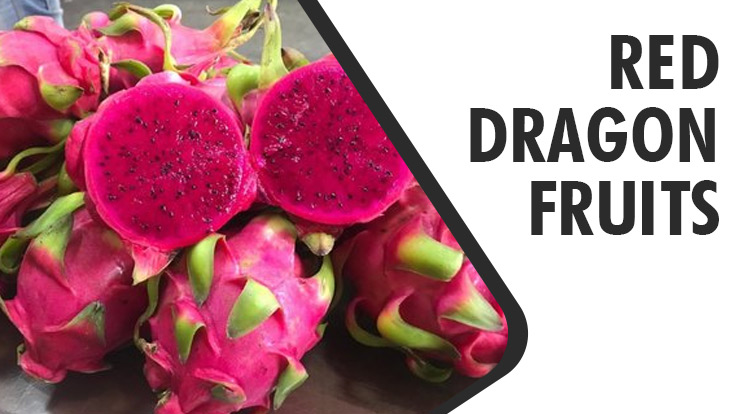
Red dragon fruit grows on slender, tall, creeping cactus that often grow on fences, trees or walls. From the outside, red dragon fruits look almost identical to the white-fleshed variety. The brightly coloured oblong fruits are about 10 cm in length and also can weigh up to a pound. They have pink to magenta coloured skin in which succulent, fleshy scales are visible overlapping. The skin is an average thickness of only 3 millimetres, so the ratio of flesh to peel is high. As a result, red dragon fruit benefits from a higher amount of antioxidants than a white one.
2. Green Dragon Fruit
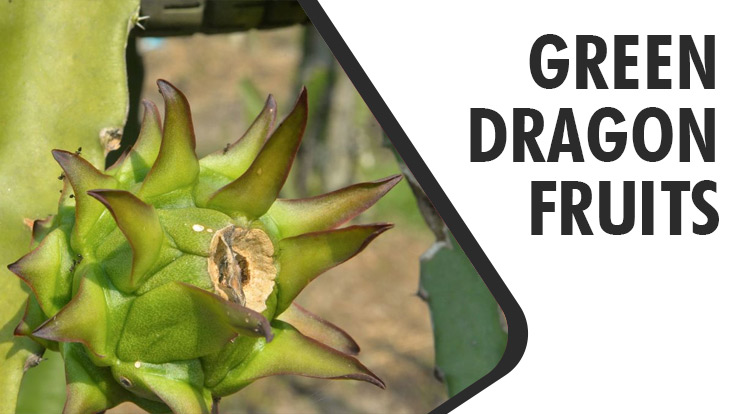
The dragon fruits produced by Bruni Green Dragon Fruit are green. The green tips are edible and sweet, with white, flavorful flesh. Bruni Green is a wonderfully high yielding, self-pollinating variety, with a small size that weighs 0.3 – 0.7 pounds on average.
3. White Dragon Fruit
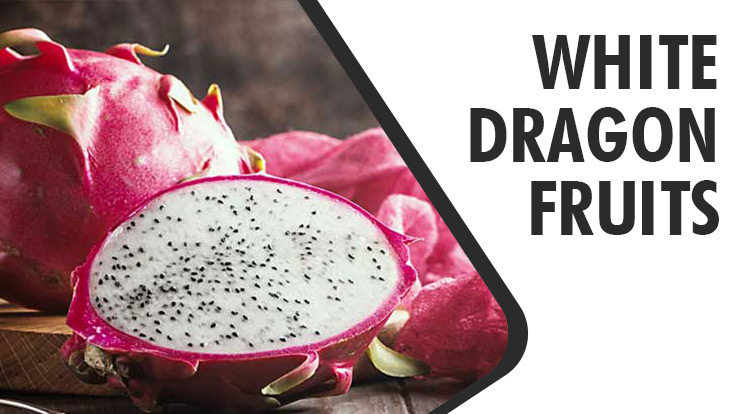
This dragon fruit is a tropical fruit cultivated in Central America, Southeast Asia, Mexico, Australia. The skin is soft and pinkish with scales, while the flesh is white with small, black edible seeds. It has a mildly sweet flavour and a texture between the fruit of a kiwi and a pear.
4. Yellow Dragon Fruit
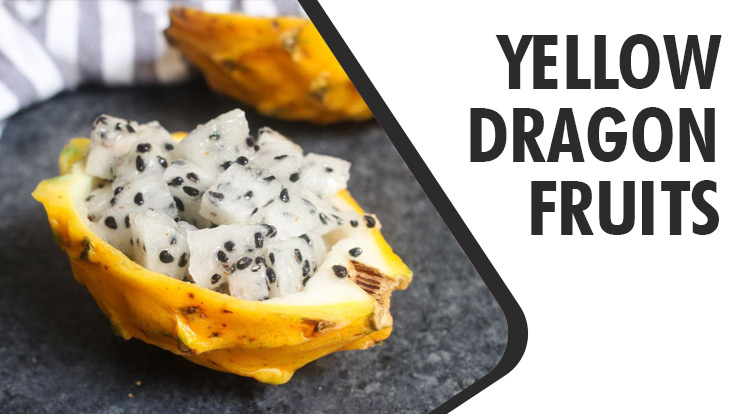
Yellow dragon fruit is oblong in shape and slightly smaller in size than the more common red varieties. The fruits are about 10 cm long and 7 cm wide. Their size depends on climatic conditions, and they are often classified into three different size groups. Yellow dragon fruit trees are grown in Ecuador and also in Colombia.
5. Pink Dragon Fruit
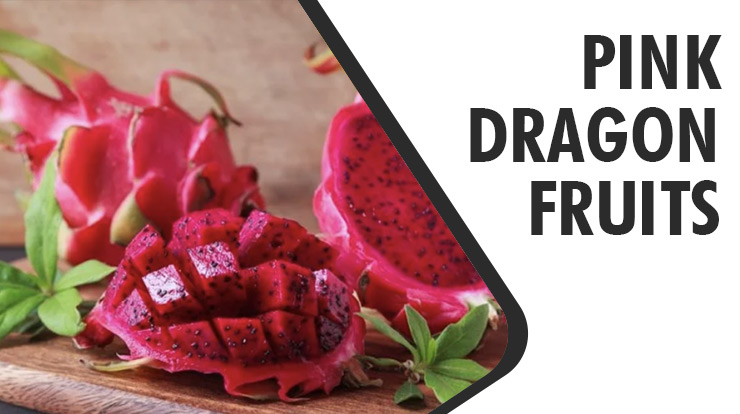
The benefits of pink dragon fruit are not only sweet, but it is also low in calories and rich in antioxidants. According to an abstract published in the World Journal of Pharmacy and Pharmaceutical Sciences, one of the best health benefits of dragon fruit is its ability to prevent inflammatory diseases such as arthritis and gout.
6. Blue Dragon Fruit
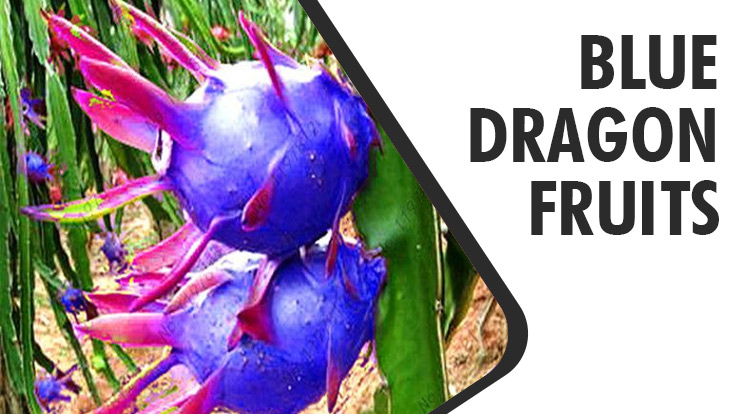
Blue dragon fruit plant in India is harvested from April to the end of October of the lunar calendar. Harvesting blue dragon fruit. We are classifying blue dragon fruit with red flesh before selling it. This is because blue dragon fruit with red flesh is rich in vitamins and nutrition.
7. Purple Dragon Fruit
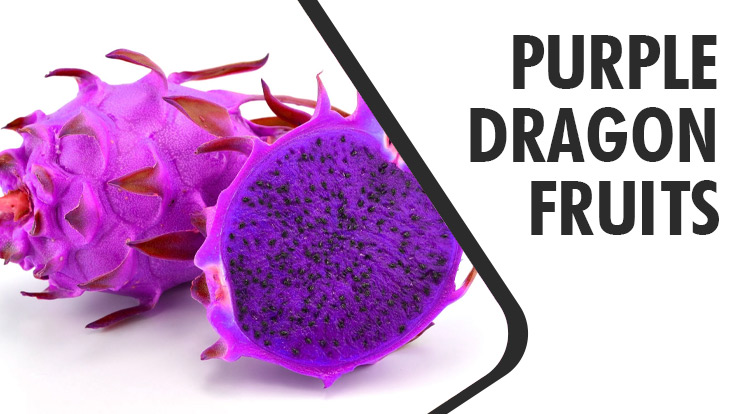
Purple dragon fruit is one of the most beautiful and delicious fruits in the world. With bright purple flesh, still little known in the West, it will captivate you. Dragon fruit flesh can vary from white (with pink or yellow skin) to hot pink or dark red with tiny black seeds. Taste is associated with the colour of the flesh. The white dragon fruit flavour is often mild, while the darker, red flesh can be sweet and juicy.
8. Black Dragon Fruit
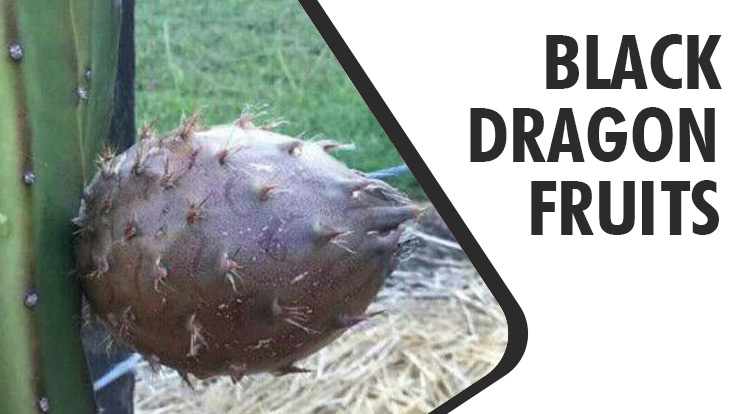
It is difficult to describe Black Dragon Fruit in the taste of Dragon Fruit. Its taste is mildly sweet, delicate on the tongue and similar to that of a raw pear. The texture of the fruit is firm,creamy, crisp to bite and juicy. Unlike many tropical fruit substitutes, dragon fruit is rarely scented.
About Dragon Fruit
Dragon fruit is also known as “Pitahaya”. This dragon is a tropical fruit known for its vibrant red skin and sweet, seed-speckled pulp. Educated people are well-known for it. Nowadays, this fruit is more prevalent in India. When asked what dragon fruit is, we can simply reply that everyone should eat it because it is a delicious fruit.
Its unique look and acclaimed superfood powers have made it popular among foodies and the health-conscious. And you can buy dragon fruit online and at the grocery store. But you should know that dragon fruit price in India is not too cheap for every Indian.
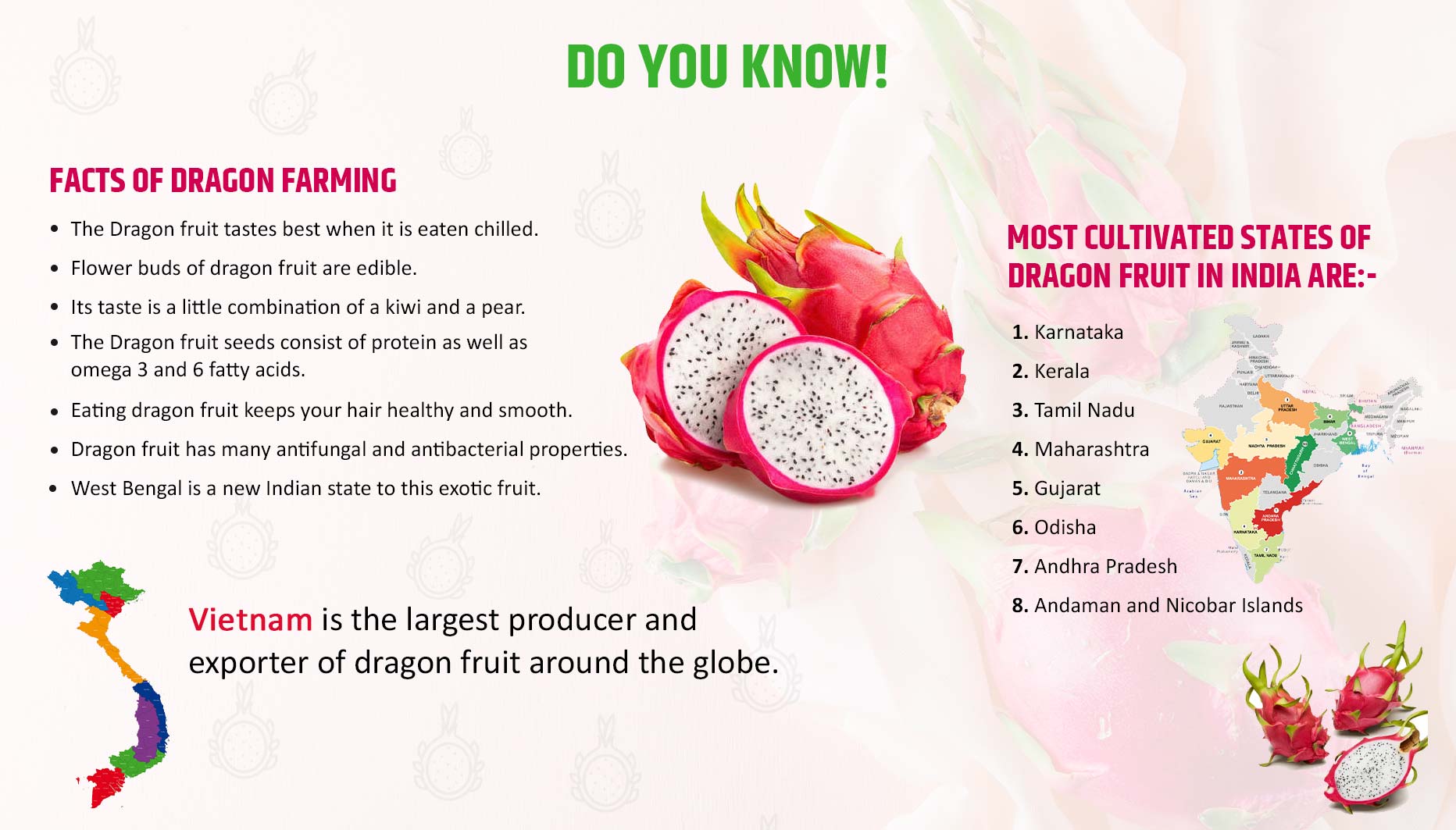
Origin of Dragon Fruit
Dragon fruit grows on the Hylocereus cactus, also known as the Honolulu Queen, whose flowers open only at night. The plant is native to Central America and southern Mexico. However, today farmers grow it all over the world. As a result, it is known by many names, including papaya, pitahaya and strawberry pear.
How to cut Dragon Fruit?
Although the exterior looks tough with its rough raised leaves, it is easy to cut. The surface of the skin is thin and smooth like that of a mango. It is a thick, soft, waxy and flexible rind that separates easily from the pulp.
How to eat Dragon Fruit?
You should use a sharp knife to cut the dragon fruit in half lengthwise because it is too hardy.
After it, Scoop out it with a spoon or cut it into cubes by cutting vertical and horizontal lines across the pulp without cutting off the peel.
To enjoy, add it to salads, smoothies and also yoghurt, or simply snack on it on its own.
Health Benefits of Dragon Fruit
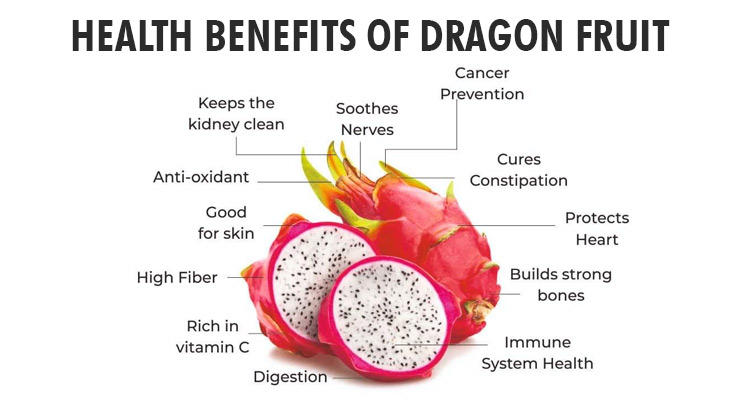
These are many uses of dragon fruit that we must focus on, because dragon fruit is most beneficial in health care.
The fruit has antioxidants, vitamin C, is rich in fibre and low in calories. But, of course, it would help if you also took the dragon fruit juice. So these are the advantages of dragon fruit thats why dragon fruit farming is most popular.
Dragon fruit is rich in vitamin C and other antioxidants, which are good for your immune system. In addition, it can increase your iron levels. Iron is important for moving oxygen through your body and giving you energy, and dragon fruit contains iron. These are the benefits of eating dragon fruit.
The vitamin C in dragon fruit helps your body take in and use iron. Dragon fruit tastes like a sweet little cross between a kiwi and a pear.
Along with this, dragon fruit uses in the skin glow, Helps soothe sunburnt skin and may prevent free radical damage; these are the dragon fruit benefits for the skin.
These are the Dragon Fruit Nutrition:-
- Calories: 60
- Protein: 1.2 grams
- Fat: 0 grams
- Carbs: 13 grams
- Fibre: 3 grams
- Vitamin C: 3% of the RDI
- Iron: 4% of the RDI
- Magnesium: 10% of the RDI
Dragon Fruit Side Effects
There are some disadvantages of dragon fruit: Consumption of dragon fruit can cause diarrhoea. However, there do not appear to be any serious side effects or health risks associated with eating dragon fruit. Still, if you eat dragon fruit and develop symptoms of an allergic reaction, stop eating the fruit immediately.
For more information regarding dragon fruit farming and vitamins. Also, get complete information about Mahindra tractor and its models. So, stay tuned with us.
Related Post:



